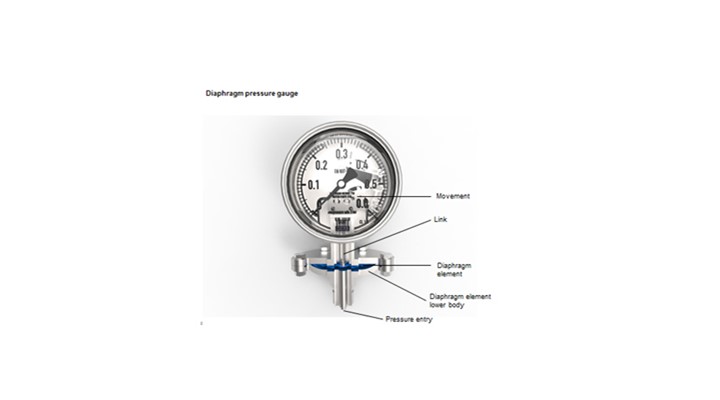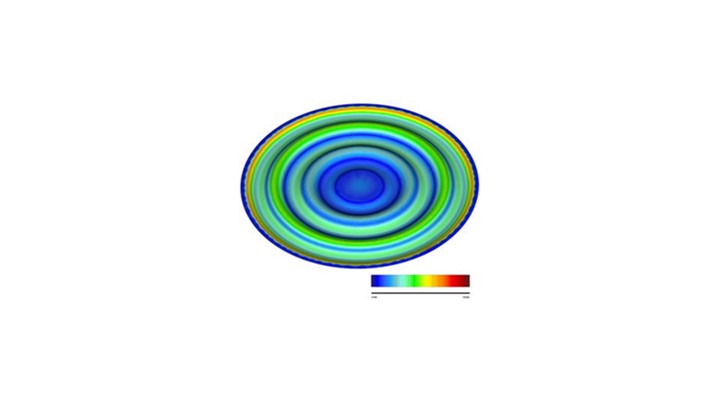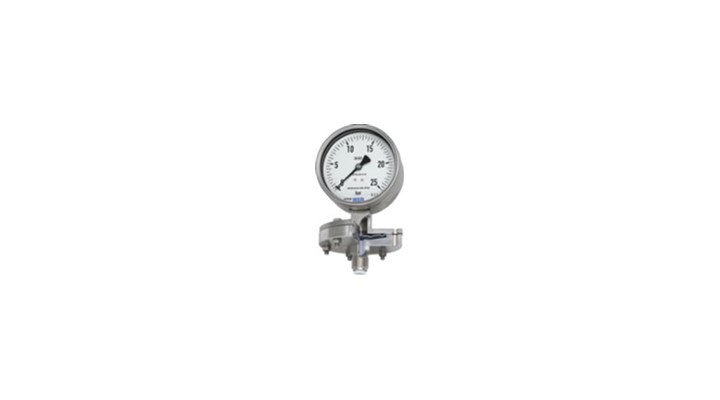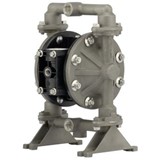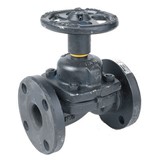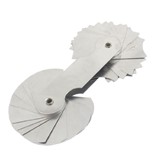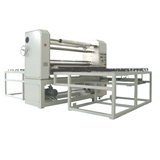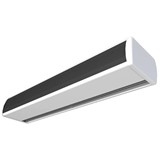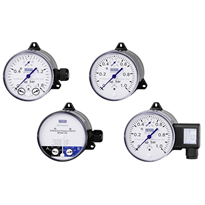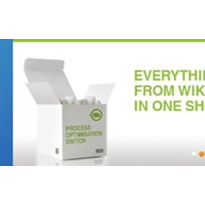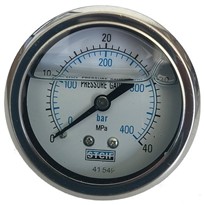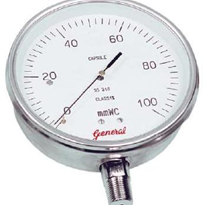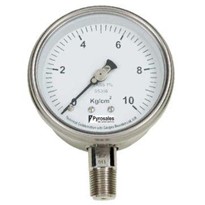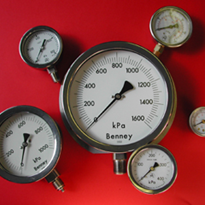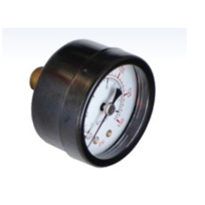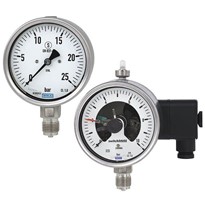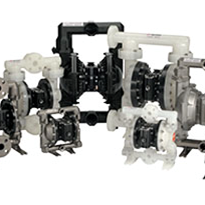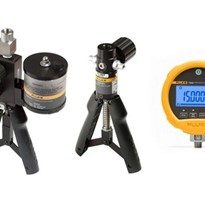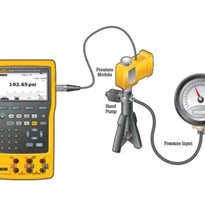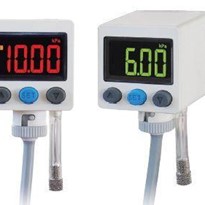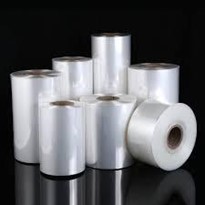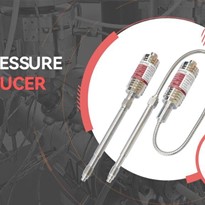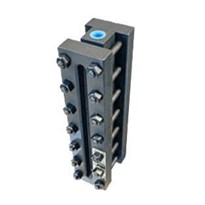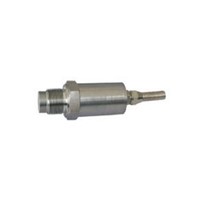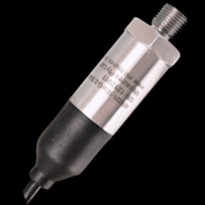Diaphragm pressure gauges are suitable for gauge, absolute and differential pressure. Their core, the diaphragm element, is a circular, corrugated diaphragm which is clamped or welded between two flanges. This element is generally manufactured from resilient steels such as stainless steel or Inconel®. On pressure loading, the deflection of the pressure element, proportional to the incident pressure, is transferred to a movement via a link. (see Figure 1)
The usable diaphragm travel is as short as approximately one millimetre, which offers a high repeatability. However, this characteristic is related to corresponding standards for quality and tolerances of the diaphragm materials. In addition to the material itself, the material strength, wave form and diameter determine the metrological characteristics of the diaphragm, and with this, the quality of the measuring result for the appropriate measuring range. Diaphragm elements basically possess a corrugated profile. A smooth metal diaphragm would deform plastically under loading and would therefore make a precise pressure measurement impossible.
In the past, developing a diaphragm element required numerous tests. These days, the design of the pressure element has been determined with the finite elements method (FEM), saving time and money. The graphical representation of this calculation shows where the pressure-related stresses are the highest. From this model, it can be derived how the metrological characteristics − i.e. diaphragm travel, linearity and hysteresis − and the service life of the diaphragm can be optimised. (see Figure 2)
Set against the Bourdon tube gauge, this 'colleague' with a diaphragm measuring element has unique advantages:
Measurement of low pressures
Diaphragm pressure gauges from WIKA measure pressures from 16 mbar, with the maximum value being, on average, about 25 bar. For measuring instruments with Bourdon tubes, in contrast, the lowest measured value achieved is around 600 mbar. It is easy to see whether the instrument is specified for "bar" or "mbar" measuring ranges: The larger the diaphragm diameter, the lower the measurable pressure, in accordance with the formula Pressure = Force / Area.
At pressures below 16 mbar however, diaphragm elements are pushed to their limits: They would have to be extremely thin to achieve the requisite elasticity, and would thus no longer be reliably stable. This problem can be solved, though, with a special form of the diaphragm gauge: the capsule pressure gauge. Capsule elements consist of two diaphragms welded together, which are generally loaded with pressure from the inside. This results in a double tube travel. This means that lower pressures can be measured without a reduction in the wall thickness. Capsule pressure gauges, however, have the disadvantage of more limited fields of application. Since their pressure chamber is not self-draining, they are not suitable for applications with liquid media.
High overpressure safety
Measuring systems with diaphragm elements, on the grounds of their design alone, offer good protection from overpressure, since the diaphragm can support itself against the upper flange. Using a contour with flattened waves, the protection factor is further increased as a result of the greater contact area. Diaphragm pressure gauges from WIKA, for example, thus have a standard overpressure safety of five times the full scale value − with Bourdon tube pressure gauges, this is only around 1.3 times as standard.
The overpressure safety with diaphragm element instruments can still, however, be increased up to one thousand times, up to 400 bar is possible. This holds true, even for measuring ranges up to 16 mbar. In this case, the upper flange has a specially turned, metallic diaphragm bed, into which the diaphragm element seats, should the full scale value be exceeded. Through this full-surface contact, any plastic deformation is excluded and the long-term stability is increased. From the same resistant-to-deformation approach, safety against underpressure can be manufactured: with a corresponding diaphragm bed on the lower flange.
Use with critical media
Here, diaphragm pressure gauges offer the user considerable leeway. In order, for example, to make their diaphragms resistant against aggressive substances, a whole multitude of special materials can be exploited − from PTFE, via tantalum, Hastelloy or titanium, through to gold. For Bourdon tubes, only stainless steel and Monel are typically suitable.
Depending on the requirements, the diaphragm element has a foil from the special material glued to it, for gold-plating it can also be galvanised. Provided that these materials have the required resilience properties, the pressure element can also be manufactured partially or completely from them. With particularly aggressive media, the lower flange of the diaphragm can also be lined, thus the area in contact with the product is fully protected. (see Figure 3)
Diaphragm pressure gauges also prove their worth with measuring tasks where viscous, contaminated or crystallising media are involved. These can clog up the narrow pressure ports of the threaded connectors or, with Bourdon tube instruments, also the internals of the tube. In order to avoid such an incident, diaphragm pressure gauges are connected to the process with an open flange. This generates a large pressure chamber, in which no media of any sort can settle.
For operation in sanitary applications, variants with flush diaphragms are available. The pressure element is welded directly to the aseptic process connection, in order to ensure a dead-space free connection. Since diaphragm pressure gauges operate with a dry measuring cell, the possibility of contamination through a transmission fluid is excluded.
Conclusion
Low measuring ranges, high overpressure safety, special materials for aggressive media, open flanges for viscous media: The versatility of these gauge models in the process industry, demonstrated here, is strongly underlined. Diaphragm pressure gauges are almost predestined for the highest demands with the stability against aggressive materials, such as one comes across in the chemical and petrochemical industries. They have also been designed for harsh environments in the oil and gas industries: WIKA diaphragm pressure gauges in a standard design (stainless steel or Inconel®) are, for example, qualified in accordance with the requirements of NACE 0175 standard, up to a temperature of 120°C, and thus are suitable for sour gas applications. This capability is confirmed through tests from an independent institute.
Mechanical pressure gauges such as diaphragm pressure gauges play an important role, also in the digital age. Your advantage: Measurement and display reliably and without the need for an external power supply. Also, with these, one can bridge to electronic pressure measurement: through designs with various switch contacts or analogue output signals. Electronic data processing of the measured value with an additional on-site display, based on the increasing safety requirements in plant design and construction, is furthermore, an interesting perspective.


